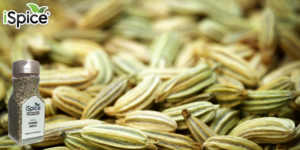 Fennel is a mildly sweet, licorice-flavored vegetable that is a versatile addition to any meal. It’s also a healthy veggie packed with vitamin C, iron and fiber.
Fennel is a mildly sweet, licorice-flavored vegetable that is a versatile addition to any meal. It’s also a healthy veggie packed with vitamin C, iron and fiber.
Look for fennel at your local farmers market during cool weather months (it thrives in the fall and winter). Grow it at home by sowing seeds indoors near your last spring frost date.
It’s licorice-flavored
A bulbous vegetable, fennel has a licorice-like flavor that pairs with seafood and pork. It has a crunchy texture that’s similar to celery and can be used raw or cooked.
Fennel comes in different forms, including the bulb, stems, and fronds. The fronds are a bit milder than the bulb, but they are also delicious when sauteed or in soups.
The fronds are also often chopped up and used as an herb or garnish. They are most commonly eaten raw, but they can be cooked too!
It’s a good idea to pick a fennel that has a fat, pale bulb with feathery leaves. The bulb is the main flavor of fennel, but the rest of the plant is just as edible.
The licorice flavor comes from the oil anethole, which is present in both fennel and anise seeds. It also has a number of other uses, including in licorice-flavored liqueurs and medicines. It has antibacterial properties, which can help reduce eczema.
It’s easy to grow
Fennel is an easy-to-grow vegetable that doesn’t require a lot of attention. It prefers full sunlight and a well-drained soil. It can be sown directly into the garden in spring, and it’s also good to plant transplants in fall for a late summer crop.
Depending on the variety you choose, you can grow it as an annual or perennial herb. It flowers and produces seeds on its own, which means it will come back next year.
Its flower heads attract a wide range of pollinating insects, including wasps, bees and lacewings. You can collect the seed heads and use them to propagate new plants.
The leaves, stalks and bulb are edible. They’re best sliced or thinly shredded, though they can be finely chopped and used in salads and soups. They add a licorice-like flavor to dishes. They’re also a great addition to stock or stews, where they can help tenderen the meat.
It’s delicious
It may look like an onion, but fennel is actually part of the carrot family. When cooked, fennel softens and takes on a sweet flavor that works beautifully with pork, chicken or fish.
Whether it’s in a salad or a soup, fennel is a great way to brighten up any meal. Plus, it’s high in vitamin C and potassium, which are important for maintaining healthy blood pressure.
But fennel isn’t just good for your taste buds; it’s also a powerful digestive aid. It can boost your metabolism and increase satiety, soothe irritable bowel syndrome and relieve menstrual cramps.
It also has antispasmodic properties and has been shown to prevent cancer and improve eye health. You can even use it to make a scrumptious cocktail! We suggest mixing it with Campari for a flavor-packed drink that will help your body relax and flush out toxins.
It’s good for you
If you’re looking for a low-calorie, flavorful way to improve your overall health, try eating fennel. It’s packed with fiber and potassium, which are both heart-healthy nutrients that may help reduce your risk of chronic disease.
Moreover, it has anti-inflammatory properties that could help protect against autoimmune diseases like arthritis and rheumatoid arthritis. It also has antimicrobial and antioxidant properties that can help prevent infections, such as those caused by fungus or bacteria.
The plant is also a galactagogue, which means it can help breastfeeding mothers increase milk supply. It can also soothe colic in babies and ease their tummy pains.